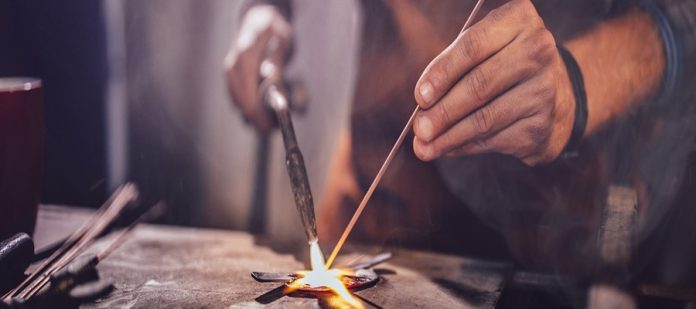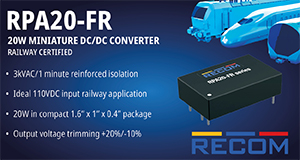Metal soldering is a process used to join two or more metal surfaces by melting a filler metal, known as solder, without melting the base metals. The solder, which has a lower melting point than the metals being joined, flows into the joint through capillary action and solidifies upon cooling, creating a strong bond. Unlike welding, where the base metals are melted, soldering relies on a low-heat process, making it ideal for delicate components and applications where excessive heat can cause damage.
Soldering is widely used in electronics, plumbing, automotive repairs, jewellery making, and industrial metalworking. It is favoured for its precision, conductivity, and versatility, allowing for secure, reliable connections between different metal components. With recent advancements, lead-free solder alloys and improved flux formulations have made soldering safer and more environmentally friendly.
How Metal Soldering Works?
Metal soldering works by applying heat to a joint and introducing a solder alloy, which melts and adheres to the metal surfaces, forming a secure connection. The process involves several key elements, including a heat source, such as a soldering iron, torch, or induction heater, flux to clean and prepare the metal surface, and solder wire or paste to create the bond.
The key principle behind soldering is capillary action, where the molten solder flows into the tiny gaps between metal surfaces. This ensures that the joint is uniform, strong, and conductive. Proper temperature control is crucial because overheating can damage components or weaken the bond, while insufficient heat may result in a poor connection.
Different types of soldering are used based on the temperature and strength required, including soft soldering, hard soldering (silver soldering), and brazing. Each method serves different industrial needs, ranging from electronic circuit board assembly to high-strength mechanical joints in automotive and aerospace applications.
Metal Soldering Process
The metal soldering process follows a step-by-step approach to ensure a strong, reliable joint.
1. Surface Preparation
Before soldering, the metal surfaces must be thoroughly cleaned to remove any oxidation, oil, or dirt that could interfere with solder adhesion. This is done using abrasive pads, sandpaper, chemical cleaners, or specialized fluxes that dissolve impurities. Flux is particularly important because it prevents oxidation during the heating process, ensuring a smooth flow of solder.
2. Heating the Joint
The joint is then heated using a soldering iron, gas torch, or induction heater, depending on the type of soldering being performed. The temperature must be carefully controlled to prevent excessive heating, which can weaken the joint or damage heat-sensitive components. The goal is to heat the metal surfaces just enough to allow the solder to flow and bond properly.
3. Applying the Solder
Once the joint reaches the correct temperature, solder wire, paste, or pre-formed solder pieces are introduced. The solder melts upon contact with the heated surface and flows into the joint through capillary action, ensuring an even distribution. The use of flux helps the solder adhere properly by removing any remaining oxides and improving wetting.
4. Cooling and Solidification
After the solder has flowed into the joint, the heat source is removed, and the connection is allowed to cool naturally. Rapid cooling should be avoided, as it can create thermal stress and weak bonds. The solder solidifies as it cools, forming a strong electrical and mechanical connection.
5. Cleaning the Joint
Once cooled, the joint is inspected for smoothness, strength, and uniformity. Any excess flux residue is cleaned using isopropyl alcohol (IPA) or water, as leftover flux can cause corrosion over time. In electronics soldering, a multimeter may be used to check electrical continuity and ensure a reliable connection.
Types of Metal Soldering
1. Soft Soldering (Low-Temperature Soldering)
Soft soldering is the most commonly used method, particularly in electronics and plumbing. It uses a low-melting-point solder alloy, typically containing tin and lead (Sn-Pb) or a lead-free alternative (Sn-Ag-Cu). The temperatures in soft soldering typically range from 180°C to 300°C. Since soft soldering does not require extremely high temperatures, it is ideal for delicate applications such as circuit board assembly and small metal components.
2. Hard Soldering (Silver Soldering)
Hard soldering, also known as silver soldering, uses a higher-melting-point solder, often containing silver or other strong alloys. This technique requires temperatures between 450°C and 800°C and is commonly used in jewellery making, refrigeration systems, and aerospace applications. Hard soldering produces stronger and more heat-resistant joints than soft soldering, making it suitable for high-stress environments.
3. Brazing (High-Temperature Soldering)
Brazing is similar to soldering but uses a filler metal with a melting point above 800°C. The process involves heating the metal surfaces and allowing brass or bronze-based solder to flow into the joint. Brazing is widely used in automotive manufacturing, HVAC systems, and heavy-duty industrial applications where high-strength, heat-resistant joints are required.
Uses & Applications of Metal Soldering
1. Electronics & PCB Manufacturing
Soldering is an essential process in electronics assembly, used to join circuit board components, connectors, and microchips. It ensures electrical conductivity and mechanical stability, making it crucial for manufacturing computers, smartphones, and consumer electronics. With the rise of lead-free soldering due to environmental regulations (RoHS compliance), manufacturers now use tin-silver-copper (SAC) alloys for improved safety and durability.
2. Plumbing & Pipe Fittings
Soft soldering is widely used in plumbing systems to create leak-proof seals in copper pipes and water lines. It provides durable, corrosion-resistant joints that withstand water pressure and temperature fluctuations.
3. Automotive & Aerospace Industries
Soldering is used in wiring, sensors, and heat-sensitive components in automotive and aerospace engineering. Hard soldering and brazing are preferred for fuel lines, air-conditioning systems, and exhaust components, ensuring high-strength, heat-resistant bonds.
4. Jewellery & Metalwork
In the jewellery industry, silver soldering is used to join gold, silver, and platinum pieces with minimal heat damage. It ensures seamless, durable joints without affecting intricate designs.
Advantages of Metal Soldering
One of the key benefits of metal soldering is its low-temperature operation, which prevents the base metals from melting or warping. It also allows for precise, clean joints, making it ideal for electronics and fine metalwork. The process provides strong, conductive bonds, ensuring reliable electrical connections in circuit boards. Additionally, soldering is cost-effective, energy-efficient, and versatile, working with a wide range of metals.
Disadvantages of Metal Soldering
Despite its benefits, soldering has some limitations. It produces joints that are not as strong as welded connections, making it unsuitable for high-load applications. Heat-sensitive materials can be damaged if temperature control is poor, and flux residues can lead to corrosion if not cleaned properly. Additionally, soft soldering has temperature limitations, as joints may fail under extreme heat or stress.
Conclusion
Metal soldering remains a critical process in modern manufacturing and repair work, offering a precise, low-temperature, and cost-effective method for joining metals. With the rise of lead-free alloys, automation, and advanced flux formulations, soldering continues to evolve, making it safer and more efficient. Whether in electronics, plumbing, automotive, or jewellery making, soldering provides reliable, durable connections that drive innovation in multiple industries.








